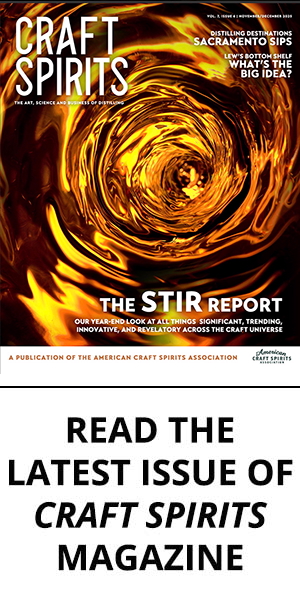
U.S. online alcohol sales reached $6.1 billion in 2021 with more growth expected in 2022, according to a report based on exclusive industry data released today by Rabobank, a leading global food and agribusiness bank.
The “2022 Alcohol E-commerce Playbook” is the most comprehensive analysis of the U.S. alcohol e-commerce landscape on the market. The report focuses on the remarkable growth of alcohol e-commerce sales since the start of the coronavirus pandemic, the reaction from consumers, retailers and brands and how companies can lay the groundwork for future success in the channel. Insights in the report were built on unique data sources and partnerships exclusive to Rabobank, and interviews with dozens of experts from alcohol companies that combined represent 70% of alcohol sales in the U.S.
According to Rabobank:
- Online sales now represent about 4% of all off-premise alcohol sales in the U.S., increasing from nearly 1.9% in 2019
- The two channels most important for large brands and retailers – online grocery and marketplaces –grew 271% in just two years and are now nearly four times larger than they were in 2019
- The average size of e-commerce teams at U.S. alcohol companies has increased 117% since 2019
- Rabobank projects online alcohol sales will grow an additional 3.4% in 2022, a testament to the stickiness of the channel and the continued investment from tech firms, brands and retailers
“E-commerce will be the number-one driver of industry growth over the next decade and a critical component of brand building, awareness, and trial, both online and in-store,” says Bourcard Nesin, a RaboResearch F&A beverages analyst and author of the report. “Companies that fail to proactively invest in their e-commerce teams will struggle to remain relevant and retain market share.”
The report offers insight into recent performance and future estimates surrounding the sector’s four major e-commerce channels:
- Online Grocery: With online alcohol purchases increasing 238% YOY in 2020 and rising 9% YOY in 2021 despite tough comps, many grocery retailers now see alcohol as the most important lever available for driving overall growth in their e-commerce business. Spurred by a massive increase in the number of retail locations that offer alcohol online, sales growth of the category has more than doubled that of the overall online grocery business. For example, at the end of 2019, only 200 Walmart locations delivered alcohol, but by the end of 2021, there were 1,500 delivering alcohol. Alcohol sales in the channel are expected to grow 15% in 2022, according to Rabobank estimates.
- Online Alcohol Marketplaces: The pandemic helped marketplaces such as Drizly and Instacart acquire millions of customers and add thousands of stores to their retail networks. That combination drove 274% YOY growth in the channel in 2020. The success in the channel has resulted in major M&A activity, the most notable transaction being Uber’s 2021 acquisition of Drizly. Growth in the channel has led to a massive influx of marketing dollars from alcohol brands, much of it funneled to Instacart and Drizly, which have an 86% market share of sales in the channel. Rabobank estimates the channel will grow 15% in 2022.
- Licensed Specialty Retailers: The channel, which includes large chain liquor stores, state-owned stores and thousands of independent mom-and-pop shops with an online offering, grew 151% in 2020. The growth was driven by operators offering local delivery and curbside pickup for the first time. The channel, which was historically dominated by high-end consumers and collectors searching for hard-to-find wines, is now better positioned to serve the general public and their everyday needs, bringing life to this very large but relatively mature part of the online alcohol ecosystem.
- Direct-to-Consumer (DtC) Wine Online: The growth of online DtC sales over the past two years likely saved hundreds of small- and medium-sized wineries from closing their doors. With tasting room sales devastated by the pandemic, online DtC wine sales grew 73% in 2020. As tasting room sales set records in 2021, online DtC sales remained far above pre-pandemic levels, suggesting online sales represent a major source of incremental revenue in the DtC wine market. In total, Rabobank estimates online sales represent around 23% of the USD 7.2bn U.S. direct-to-consumer wine business.
The “2022 Alcohol E-commerce Playbook” also outlines strategies for CEOs looking to build out their organizations’ digital capabilities and offers data to help them benchmark for their e-commerce investment. Underpinning Rabobank’s unprecedented access to industry leaders, the report includes many original quotations, including insights from e-commerce leaders at six of the ten largest U.S. alcohol companies.
“The industry is experiencing a structural change, a massive opportunity,” Nesin says. “I only hope industry leaders have the foresight to take advantage of it.”


